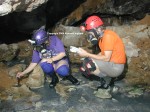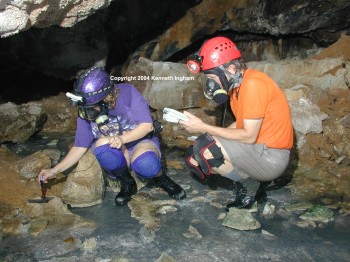| |
| How do you study life in caves? |

Click on the Picture for Larger Image |
There are many ways to study cave life and how organisms
interact with the non-biological cave environment. Just look at the picture
below to see the adventurous cave researcher, Diana Northup and Mike Spilde
studying a cave in Mexico.

Click on the Picture for Image Inforamtion
Click on the words below to learn more about each different and interesting way.










------

|

|






















